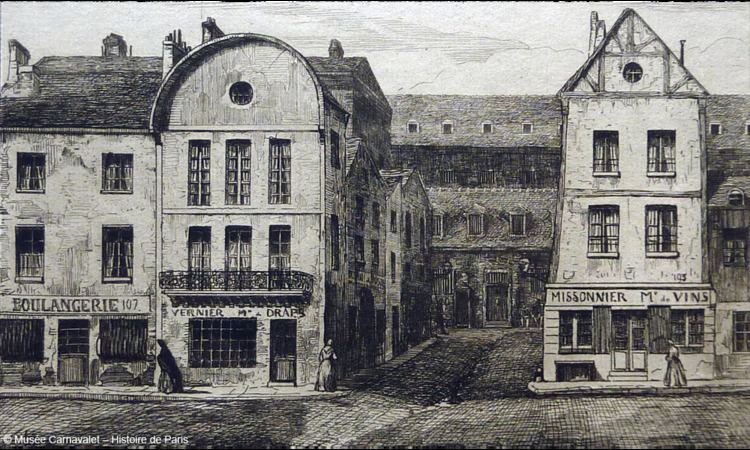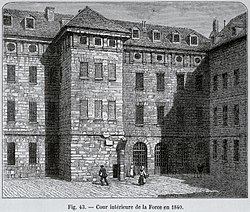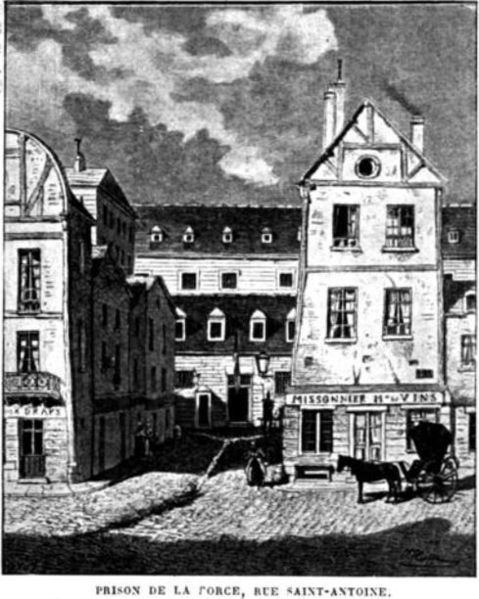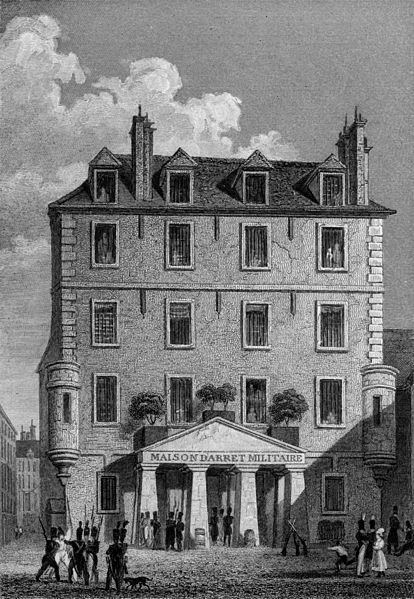Closed 1845 | Street address Rue de Roi de Sicile Opened 1780 | |
 | ||
Former name Hôtel de la ForceLa Grande ForceLa Petite Force Similar Madelonnettes Convent, Temple, Hôtel d'Angoulême Lamoignon, Grand Châtelet, La Santé Prison | ||
La Force Prison was a French prison located in the Rue du Roi de Sicile, in what is now the 4th arrondissement of Paris. Originally known as the Hôtel de la Force, the buildings formed the private residence of Henri-Jacques Nompar de Caumont, duc de la Force. Towards the end of the reign of Louis XIV, the Hôtel de la Force was divided into two parts, one of which took the name of the Hôtel de Brienne, and had its entrance in the Rue Pavée; the other retained its former name and had its entrance in the Rue du Roi de Sicile.
Contents

La Grande Force

After passing through several hands, the buildings were acquired, in 1754, by the war ministry, and were transformed, in 1780, into a prison. The Hôtel de la Force was renamed La Grande Force and was intended for debtors and those charged with civil offences. The prison consisted of several buildings, each of which had a separate yard. The most airy building was situated in the centre between two yards planted with trees. It was there that such prisoners were detained who could incur some expense. On the left was the infirmary.
La Petite Force

At the same time the Hôtel de la Force was being converted into a prison, the Hôtel de Brienne was demolished, and a new prison for prostitutes was erected on its site, which was called La Petite Force. The front presented a sombre aspect. It was ornamented with vermiculated rustics and the entrance was formed by an elliptical arch. It was three storeys high and was surmounted by a Doric cornice. In its construction, neither wood nor plaster were employed, the whole being built of stone bound together by iron bars. It was located adjacent to the Hôtel de Lamoignon.

During the French Revolution, this prison was used for political prisoners, and it was here that the close friend of Marie Antoinette, the Princesse de Lamballe was taken. La Force came under attack by violent mobs on 3 September 1792, and the four following days:- one hundred and sixty prisoners, among whom were three priests and the Princesse de Lamballe, were massacred there.

The Grande Force had housed only male prisoners and the Petite Force, had been used exclusively for women, however, in 1830 the two prisons were united, and placed under one management. The whole prison was then converted to house males committed for trial. These prisoners were divided into two separate groups; the old offenders into one ward, the young and comparatively innocent into another.
The prisoners slept in large and well ventilated chambers, and the boys each had a small apartment which contained a single bed. The prisoners had the privilege of working if they wished, but they were not obliged to do so, inasmuch as they were on remand and not yet convicted of crime. There was a department for the sick, a bathing-room, a parlor, and an advocate's room, where the prisoners could hold conversations with their legal defenders.
The two prisons of La Force were demolished in 1845, and the only remaining part is a section of wall adjoining the City of Paris Historical Library.
Notable prisoners
Detainees included:
Fictional detainees included:
